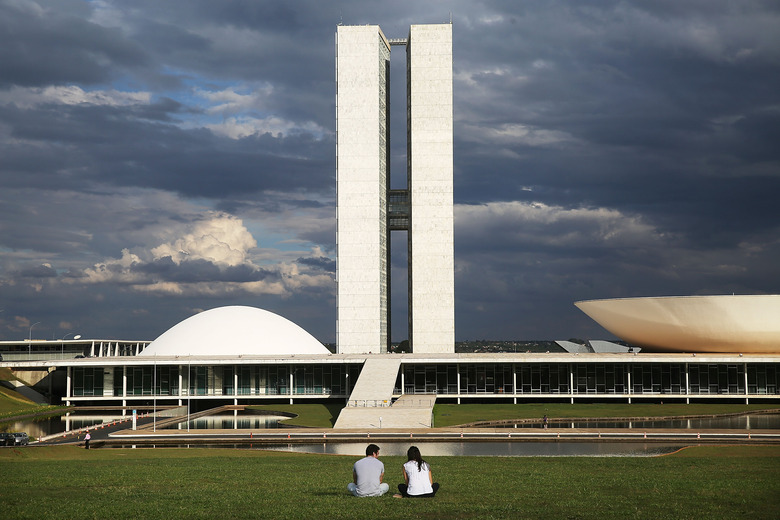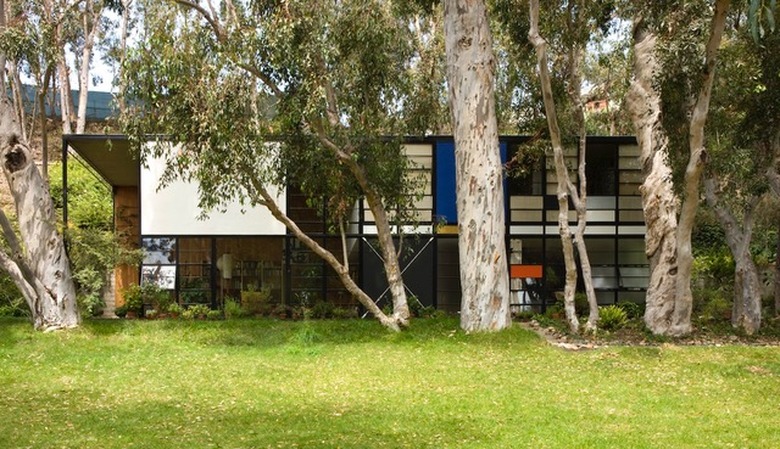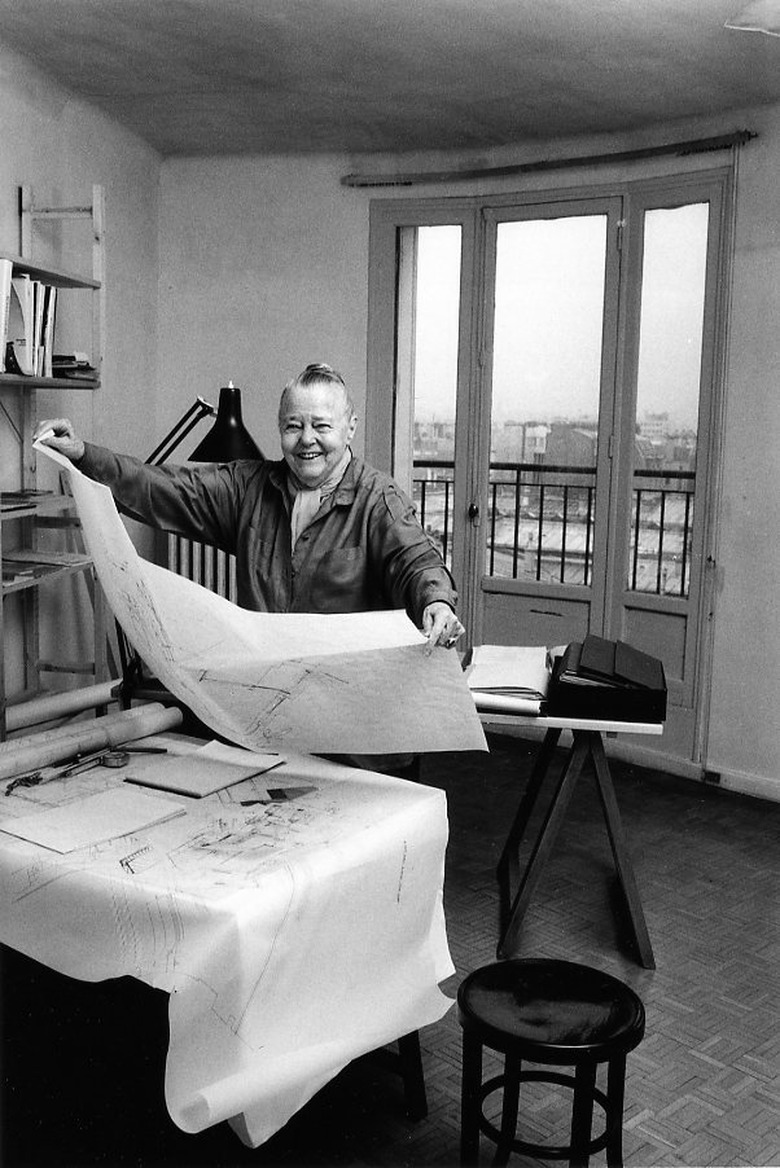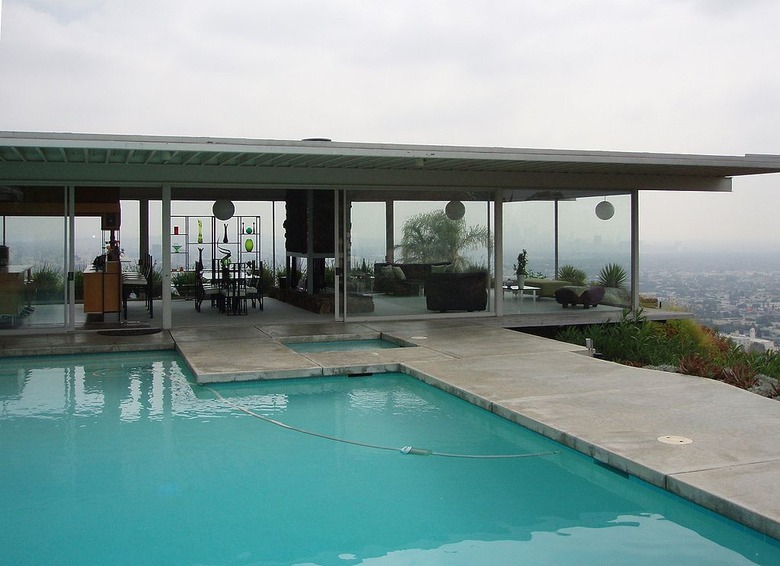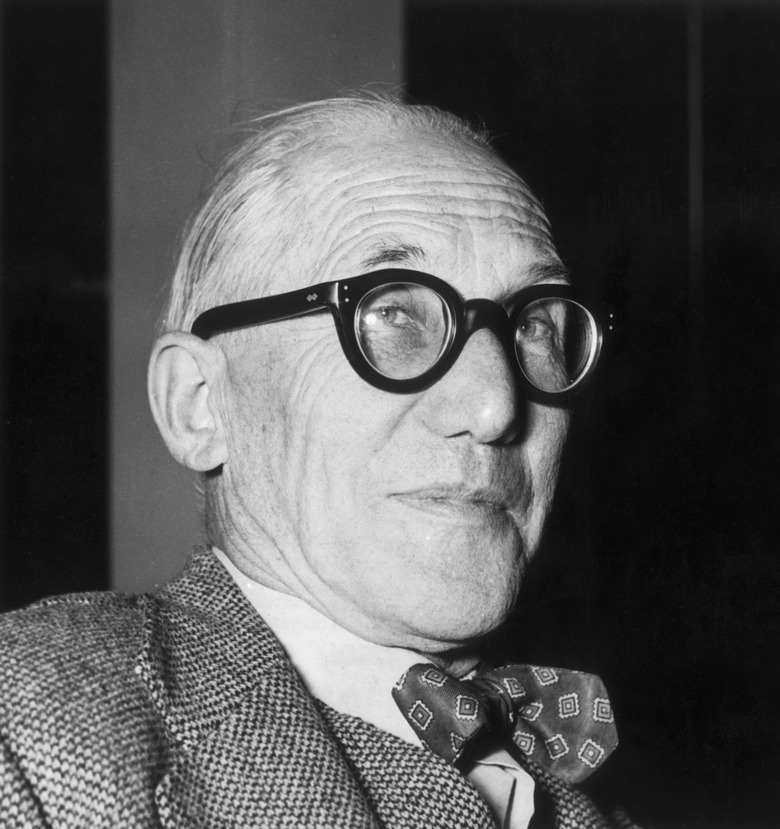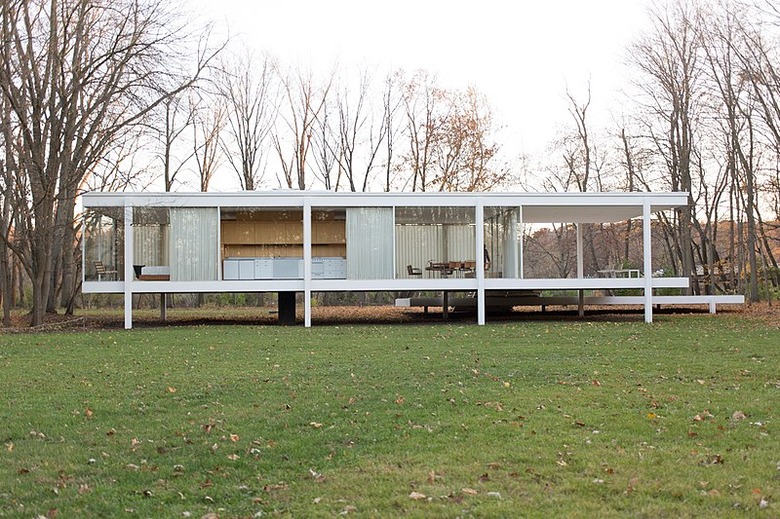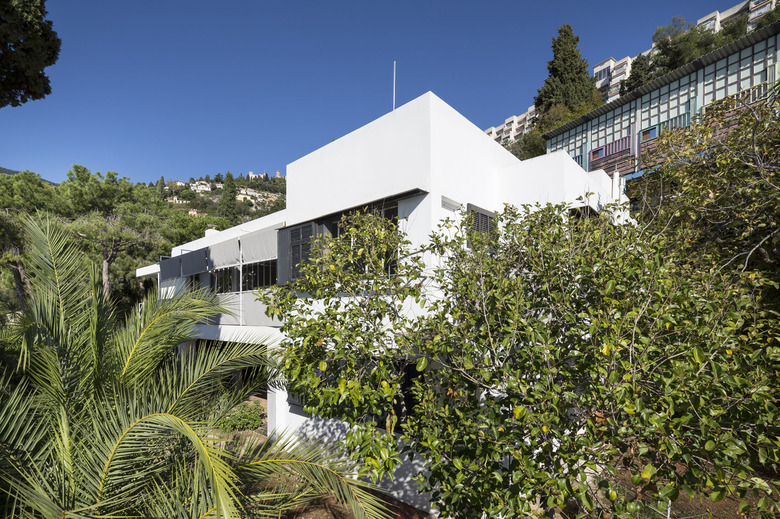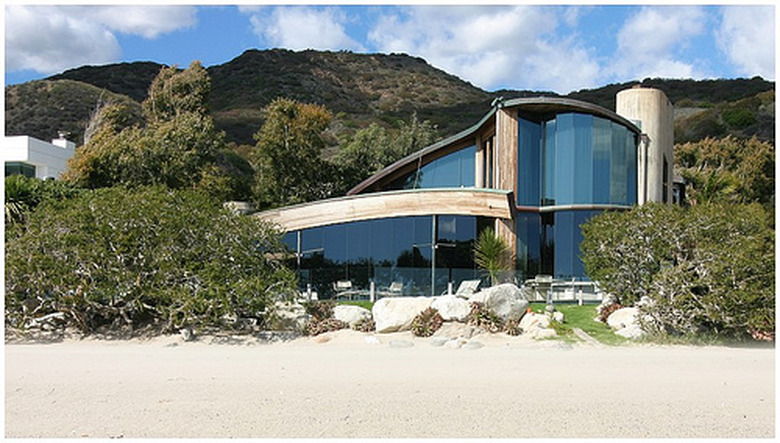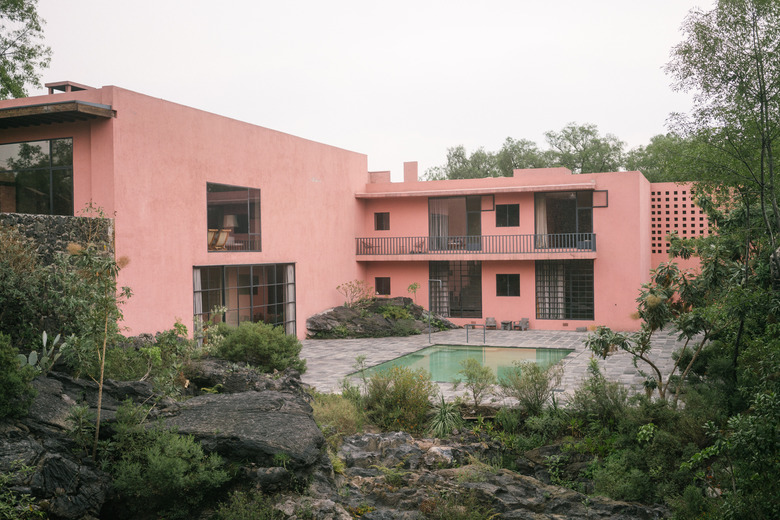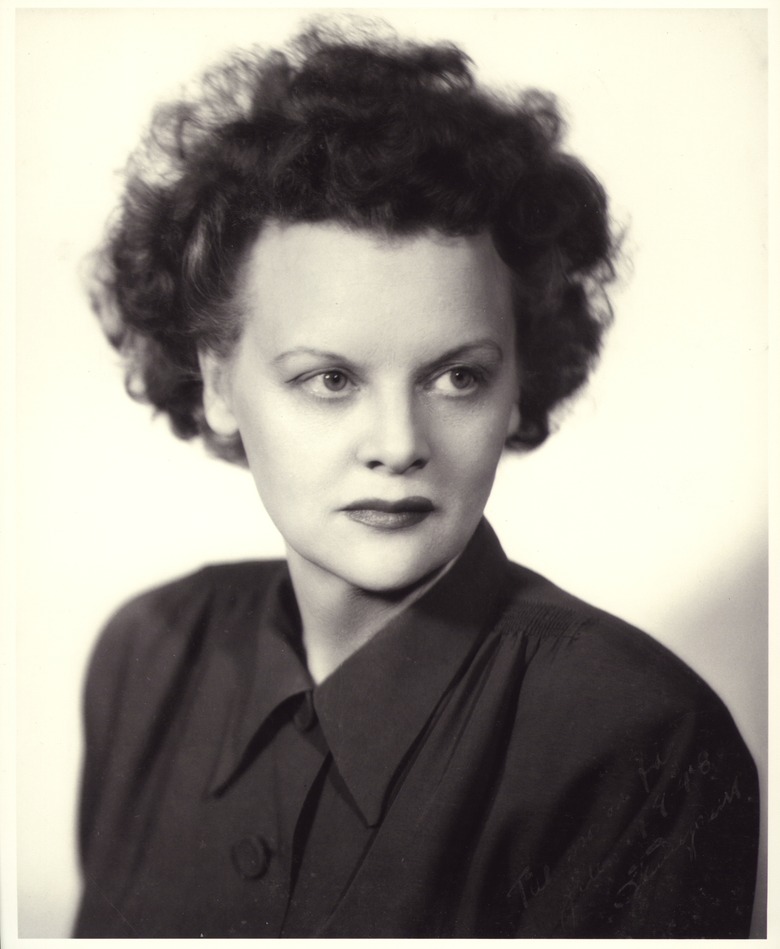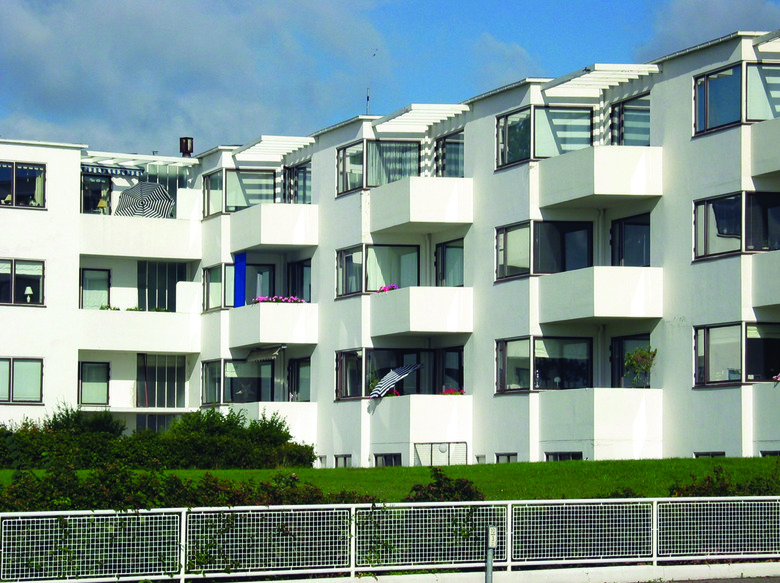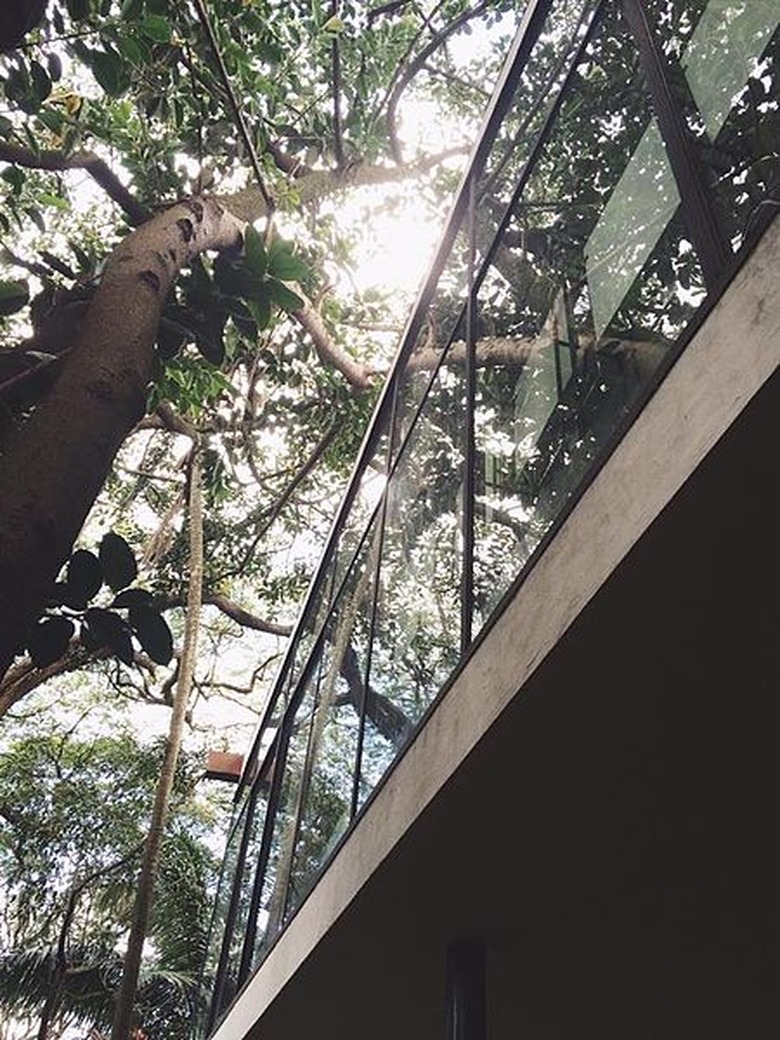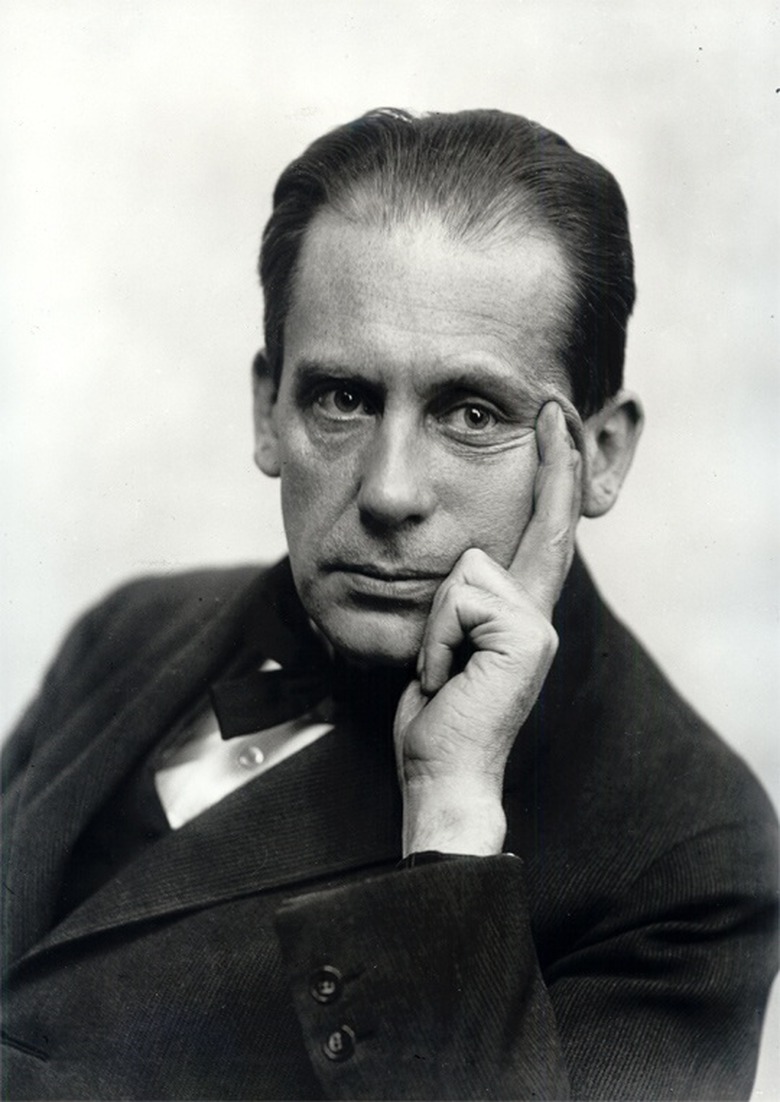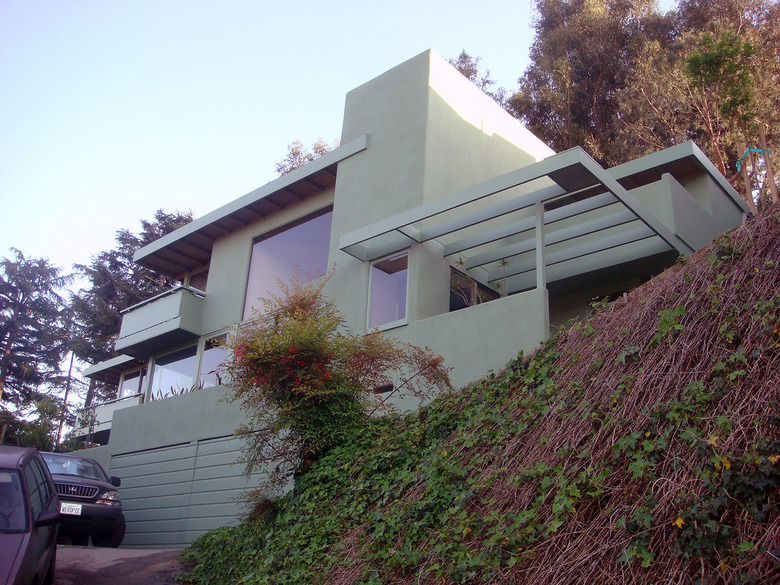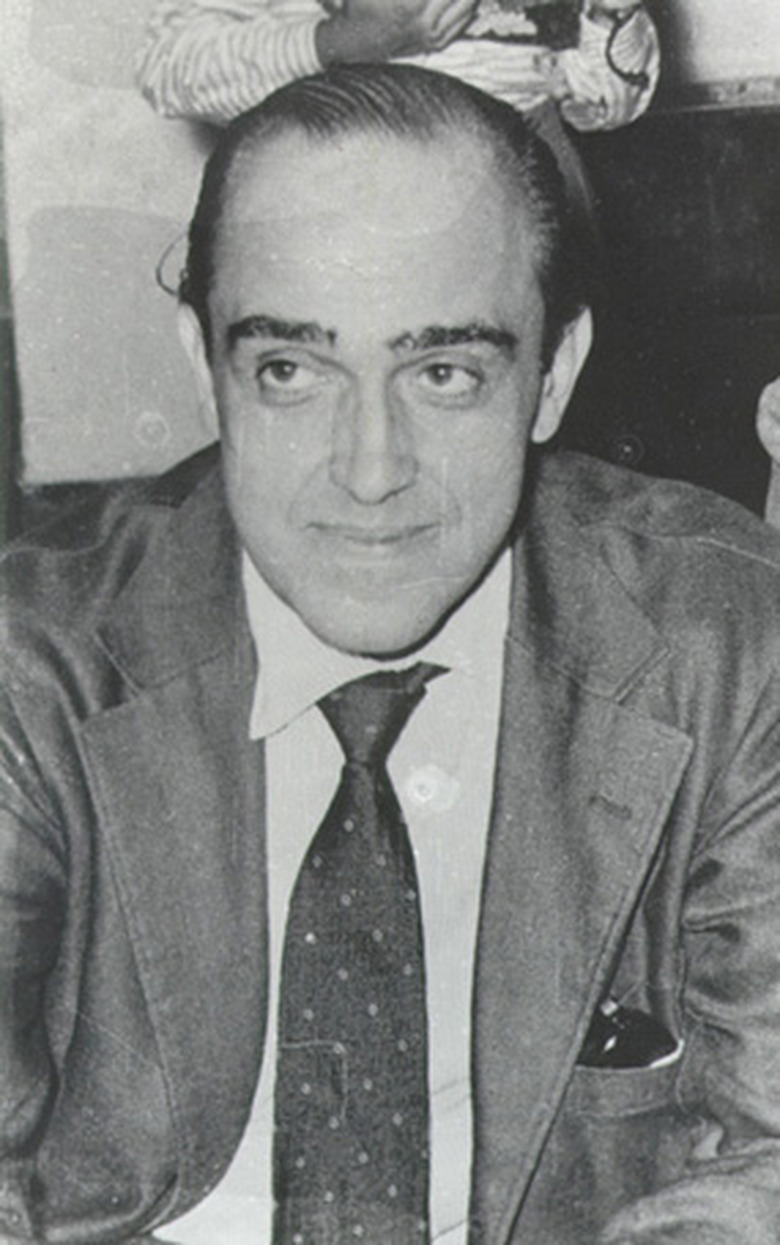The 17 Most Important Midcentury Modern Architects
When it comes to midcentury modern design, the impact of the movement extends to everything from furniture to interiors. But perhaps the most iconic creations are the architecture. Midcentury modern architects embraced experimentation, looked for ways to incorporate architecture into nature, wrote their own theories on the best approach to design, and collaborated on iconic spaces. Materials that were rarely or never before seen in housing construction served as a starting point for these architectural feats. Some structures seemed to float above the ground, while others transformed the way that home interiors looked in both layout and aesthetics. Contributions to the style included not just private homes, but also civic buildings, libraries, university campuses, churches, and more.
Here, we round up 17 of the most important names you should know from midcentury modern architecture:
1. Charles and Ray Eames
As far as design duos of midcentury modern style go, Charles and Ray Eames definitely take a spot at the top of the list. You'll naturally see their names in many books and writings about the movement. And for no small reason: Out of their Eames Office, they produced everything from homes to tables to films. They met at Cranbrook Academy of Art in Michigan, where they both experimented with how to make design more forward-thinking. They moved to California after marrying in 1941.
Designed in 1949, The Eames House (Case Study House #8) became one of their most iconic architectural feats. Though it feels industrial — it's made primarily out of glass and steel — the house was meant to become one with nature. The duo did this "by nestling the house into the hillside, rather imposing it on the site," according to the Eames Foundation. You can currently take a tour of the inside or outside of the space in Pacific Palisades.
2. Charlotte Perriand
Born in 1903, Charlotte Perriand started to make a splash in the design world at the young age of 24. She caught the attention of Le Corbusier, and then joined his studio, where she created iconic furniture pieces with him and Pierre Jeanneret. The project that caught their attention was her Bar sous le Toît (bar under the roof), an aluminum and steel structure that strongly resembles the corner bars that we know and love today. In 1940, she traveled to Japan by invitation from Japan's Ministry of Trade and Industry. Her two years there influenced her to experiment with materials like bamboo.
Inventive in her pursuit of a more streamlined interior, Perriand also created the Kitchen for an apartment in Le Corbusier's Unité d'Habitation, designed from 1948-50. The modular kitchen space included features that we take for granted today, but felt like a novel idea at the time, like a sink with a waste disposal in it. Perriand focused on ease of use, choosing materials for the countertops that would make them easier to clean.
3. Pierre Koenig
Pierre Koenig gained notoriety for his experimentation with materials such as steel. As part of the Case Study House program — a project created by Arts & Architecture magazine's editor and owner John Entenza to create a series of houses by renowned architects — Koenig designed iconic houses like the Stahl House (Case Study House #22). It sits in the Hollywood Hills of California and you can currently sign up for a tour.
Born in 1952, Koenig studied architecture at the University of Southern California and ended up teaching there for more than 40 years. During his time, he also served as director of the Natural Forces Laboratory, a space dedicated to the study of "the art of building structures in harmony with their environment," according to USC's website.
4. Le Corbusier
Charles-Edouard Jeanneret, better known as Le Corbusier, opened an architectural practice with his cousin Pierre Jeanneret in 1922 and went on to make an impact on midcentury modern architecture and design. Born in 1887 in Switzerland, he not only contributed to the style through his work, but also through his writing. His 1923 architecture manifesto Five Points of Architecture encompassed his style and influenced that of others in decades to come. His work often gets categorized into the International Style of architecture, known for its "lack of decoration" and use of steel and glass, according to the Museum of Modern Art.
Like many famous midcentury modern names, he reached a global audience. According to the Museum of Modern Art, he was "one of the rare architects to have built on three continents before the advent of commercial intercontinental jet service." Seventeen of his sites — spanning across seven countries — made it to the United Nations Educational, Scientific, and Cultural Organization (UNESCO)'s World Heritage list. (To illustrate the importance of the list: the Taj Mahal is on it.)
5. Ludwig Mies van der Rohe
Mies van der Rohe gained prominence in the world of midcentury modern architecture, and his influence can still be felt today. Born in Germany in 1886, his work stood out "by emphasizing open space and revealing the industrial materials used in construction," according to the Mies Van der Rohe Society. His most well-known projects include the 1945 Farnsworth House and the 1958 Seagram tower (designed in collaboration with Philip Johnson).
Van der Rohe served in World War I and then returned to Berlin, where he worked with architect Peter Behrens, and he opened his own office in 1913. He moved to the U.S., where he served as director of the School of Architecture at the Armour Institute in Chicago — later known as Illinois Institute of Technology — in 1938. He later designed the school's news campus. The Museum of Modern Art organized an exhibition on his work in 1947. In reference to the Institute of Technology project, the exhibition's press release reads: "No other modern architect has had an opportunity to design on so large a scale."
6. Eileen Gray
During the course of her career, Eileen Gray became known for her furniture design, but the self-taught architect wanted to be known for more than that. At 48 years old, she began work on her first architectural project: the E-1027 House (or Villa E-1027). She completed the house in 1929, at 51 years old.
Born in Ireland in 1878, Gray moved to Paris in the early 1900s. When it comes to histories on midcentury modern architecture and design, Gray often gets left out of the conversation. E-1027, which experienced plenty of less-than-ideal situations, is an important example of midcentury modern architecture. In 2018, the Association Cap Moderne led efforts to fundraise for preservation; it currently handles visits to the space.
7. John Lautner
Not every architect can claim that they created a structure most people liken to a U.F.O. But John Lautner, born in 1911, takes the cake for this with his 1960 Malin Residence (aka Chemosphere) in the Hollywood Hills. The octagon-shaped house sits 29 feet above the ground and seems to float amidst the nature surrounding it. Lautner worked on his architecture chops at Frank Lloyd Wright's Taliesin Fellowship from 1933 to 1939 in Wisconsin. In the late 1930s, he relocated to Los Angeles to work on Wright's Sturges House.
He would go on to make his own mark on the city with residences like the 1961 Sheats-Goldstein house. In 1993, he received the Gold Medal from the American Institute of Architects' Los Angeles chapter.
8. Richard Neutra
Born in Vienna in 1892, Richard Neutra served during World War I for a few years while maintaining his interest in architecture. He arrived in the U.S. in 1914, traveling to Los Angeles in 1925. He knew many of the key figures in midcentury modern style, including Rudolph M. Schindler, with whom he lived for a time. In the City of Angels, he designed everything from apartment buildings to private homes.
Neutra made history when he built the 1929 Lovell House, "the first steel house in America" according to Lauren Whybrow, author of From A to Eames: A Visual Guide to Mid-Century Modern Design. His 1946 Kaufmann house in Palm Springs won an American Institute of Architects Distinguished Award. In 1949, he was featured on the cover of TIME, which called the beauty of his designs "practical, not pretentious."
9. Luis Barragán
With an engineering background, Luis Barragán took the self-taught route to architecture after traveling through France and Spain. Born in 1902 in Guadalajara, Mexico, he was part of the Escuela Tapatía movement. His projects include the 1952-1955 Chapel for the Capuchinas Sacramentarias de Purísimo Corazón de Maria, the 1957 Torres de Satélite in collaboration with artist Mathias Goeritz, and the 1958-1961 residential subdivision, Las Arbodeladas.
Barragán's work made an indelible mark on the midcentury modern style, as evidenced by the many people still visiting his structures to this day. His 1947-1948 Mexico City House and Studio is on UNESCO's World Heritage List. And in 1980, he received the Pritzker Architecture Prize "for his commitment to architecture as a sublime act of the poetic imagination."
10. Greta Magnusson Grossman
With a shop in Beverly Hills that attracted the attention of stars like Greta Garbo, Greta Magnusson Grossman made an impact on California design — even if she isn't as commonly mentioned as others on this list. Born in Sweden in 1906, she started to make a name for herself in L.A. around the 1940s and 1950s. She designed around 14 homes in that city alone between 1949 and 1959, according to gallery R & Company.
According to the Los Angeles Conservancy, Grossman was "the city's only female architect to own an independent practice." She designed spaces such as the Backus house, completed in 1950, and the Nelson houses, completed in 1954. Design Within Reach — which currently carries some of her furniture designs — writes that Grossman's houses were known for their "lightness of form" and the way they "were frequently balanced perfectly on the edge of a hillside." Her work has been highlighted by museums, including a 2012 retrospective at the now-closed Pasadena Museum of California Art.
11. Arne Jacobsen
Danish architect Arne Jacobsen originally wanted to pursue painting as a career but found a love for furniture design and architecture instead. Born in 1902 in Copenhagen, Jacobsen was influenced by the work of Mies van der Rohe and Walter Gropius. Soon after his graduation in 1929, Jacobsen took the first prize award for "an ultramodernistic concept for 'The House of the Future' at the Building and House Exhibition of the Academic Architects' Association in Copenhangen," according to Sika Design. The design included a helicopter pad.
Jacobsen taught architecture at The Royal Academy of Fine Arts, Copenhagen and went on to design a number of private homes. He also took on projects like the National Bank of Denmark. The 1934 Bella Vista Estate shows Jacobsen's knack for designing sleek yet functional spaces.
12. Lina Bo Bardi
Italian-Brazilian architect Lina Bo Bardi took on the big task of bringing to life the building that would house the São Paulo Museum of Art (MASP) in the 1940s. It was the first modern museum in the country, according to the museum's website. Bardi's innovative design elevated the structure slightly above the ground, creating a public plaza for visitors. Born in 1914 in Italy, Bardi first pursued her interest in architecture at the University of Rome.
Beside her iconic museum building, Bardi also built a house for herself and her husband after they first relocated to Brazil. The Casa de Vidro (Glass House), built in 1951, resides in a tucked-away corner of Morumbi, São Paulo. Surrounded by nature, it lives up to its name; its walls are large windows that reflect the trees around it. Bardi also made her mark on midcentury modern style through her set design, curating, and editing in Habitat magazine, which she funded with her husband Pietro.
13. Eero Saarinen
American-Finnish architect Eero Saarinen, born in 1910, couldn't help but be surrounded by creativity and good design. His parents made sure of it: Eliel Saarinen served as the director of Cranbrook Academy of Art in Michigan and Loja made her mark as a textile artist. In addition to his contributions to areas like furniture design, Saarinen designed some of the most well-known structures in midcentury modern history. Take for instance the Gateway Arch, an iconic landmark in St. Louis, Missouri.
Saarinen also designed the Trans World Airline Flight Center in New York City's JFK Airport. The structure opened in 1962 but in the early 2000s, it didn't meet modern guidelines for security, so traffic was redirected to Terminal 5. It remained shuttered for more than a decade, until developer Tyler Morse decided to give it new life. The iconic space reopened in May 2019 as the TWA Hotel.
14. Walter Gropius
Known as the founder of the Bauhaus school, Walter Gropius was born in Berlin in 1833. He studied with architect Peter Behrens before starting his own practice with Adolf Meyer in 1910. In 1919, he officially founded the Bauhaus in Weimar, Germany — an art school that would end up being a lasting influence for designers, artists, and many creative people. As scholar Alexandra Griffith Winton writes, the curriculum Gropius created "would turn out artisans and designers capable of creating useful and beautiful objects."
Gropius designed the iconic building in 1925-1926 for the school after it relocated to Dessau. It includes the kind of sweeping glass walls that would become a feature of midcentury modern architecture. Other now-iconic designs include the 1938 Gropius House in Massachusetts and the 1963 MetLife building (in collaboration with Emery Roth & Sons) in New York, previously known as the PanAm Building.
15. Rudolph M. Schindler
Born in Vienna in 1887, Rudolph Michael Schindler set his sights on greatness early on. He felt the most influenced by the work of Frank Lloyd Wright and in 1918, Wright actually hired him. In 1921, Schindler decided to make roots in Los Angeles, where he built his own house. According to the MAK Center, Schindler focused primarily on the idea of "Space architecture," which meant paying close attention to a space's interior.
His architectural work includes multi-family housing such as the Bubeshko Apartments in Silver Lake, as well as structures like the Bethlehem Baptist Church in South Los Angeles. As recently as 2018, one of his houses in Los Feliz was listed at $1.8 million. You can currently visit the 1922 Schindler House in West Hollywood. Meant for communal living — it was designed to be shared between Schindler, his wife, and another couple — the space used tilt-slab walls, innovative for the time.
16. Oscar Niemeyer
Born in 1907 in Rio de Janeiro, Oscar Niemeyer would come to influence architecture in his hometown and beyond. His projects included collaborations with figures like Le Corbusier, with whom he designed the United Nation Headquarters in New York. Other designs spanned the globe, from Italy to Algiers. In his own words, his approach to architecture "followed the old examples — beauty prevailing over the limitations of the constructive logic."
Niemeyer's input in the design of Brasília — the then-new capital of Brazil — helped form its iconic look. His government buildings went far beyond your run-of-the-mill ones, offering a new way to think about these spaces. In 1988, Niemeyer received the prestigious Pritzker Architecture Prize — only the sixth person outside of the U.S. to do so.
17. A. Quincy Jones
Archibald Quincy Jones made his mark on Los Angeles in the 1950s and 1960s as an architect, educator, and critic. Born in Kansas City in 1913, he studied architecture at the University of Washington. In 1945, he started his practice. From the 1950s to the 1970s, he mentored the next generation as a visiting professor and dean at the University of Southern California's School of Architecture and Fine Arts. He would go on to design a number of buildings for the university.
Among his many projects — from houses to libraries — Jones also designed the 1975 Burbank Warner Bros. Records headquarters. In 2013, the Hammer Museum in Los Angeles held the first major museum retrospective of Jones's work.
